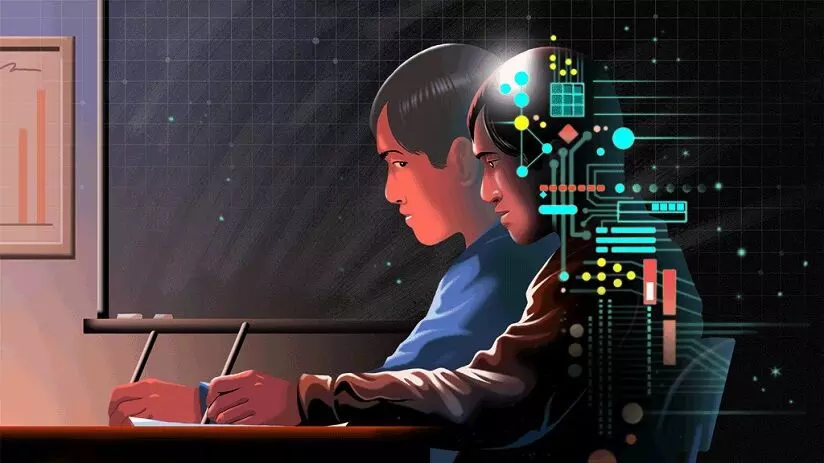Promise vs Preparedness

As India positions itself as a global digital power, artificial intelligence (AI) is finding its way into schools and colleges across the country. The Central Board of Secondary Education (CBSE) has introduced AI as a subject, and private institutions in metros are experimenting with AI tutors, personalised learning systems, and data-driven academic planning. The promise is immense: better student engagement, tailored instruction, reduced administrative load, and futuristic skill development. Yet, this rapid integration of AI raises critical questions of preparedness, equity, and ethics that policymakers and educators must confront before the technology runs ahead of regulation. India’s education system, often criticised for rote learning and uniform assessments, could benefit significantly from AI-enabled customisation. Imagine a classroom where students struggling in mathematics receive individualised lessons, paced according to their comprehension, while gifted students are fast-tracked. AI tools, such as intelligent tutoring systems and predictive analytics, can identify learning gaps early, recommend resources, and even suggest career pathways based on performance data. For teachers, it can mean automated grading, classroom management support, and insight into student behaviour that was previously invisible.
However, this utopian vision of AI-led education assumes a base level of infrastructure and digital literacy that is absent in large swathes of the country. According to the Unified District Information System for Education (UDISE), nearly 40 per cent of government schools still lack internet access. Power outages, outdated hardware, and lack of teacher training further widen the readiness gap. The AI learning tools that excite policymakers are often developed with urban, English-speaking students in mind. In rural or economically backwards regions, even basic computer literacy remains a challenge. This digital divide risks reinforcing educational inequality rather than bridging it. AI models are only as good as the data they are trained on, and when deployed in a country as diverse as India, they risk perpetuating social and linguistic biases. A chatbot that works in English or Hindi may not understand the nuances of Malayalam or Assamese. Algorithms may unintentionally reinforce caste- or gender-based assumptions if historical data is not adequately sanitised or questioned. Without inclusive datasets and culturally sensitive design, AI may alienate more students than it supports. Moreover, the question of teacher training is fundamental. India already faces a shortage of qualified teachers, especially in STEM subjects. Expecting underpaid, overburdened educators to seamlessly adopt AI tools without structured training and incentives is unrealistic. The National Education Policy 2020 rightly emphasises the integration of technology in pedagogy, but implementation has been uneven. Most teachers have had little exposure to AI, and those who do are often sceptical of its value or wary of being replaced. The fear that AI could deskill the teaching profession needs to be addressed with transparency and reassurance.
Then there’s the issue of data. AI systems in education rely on extensive data collection—attendance records, academic performance, behavioural patterns, and even biometric markers in some cases. Who owns this data? How is it stored, and who has access to it? India still lacks a robust data protection law, and in such a vacuum, children’s sensitive information is vulnerable to misuse. Educational institutions, particularly private ones, must be held accountable for transparency in data usage, informed consent from parents, and safeguards against surveillance.
A responsible roadmap for AI in Indian education must rest on three pillars: inclusivity, regulation, and capacity building. First, inclusivity means ensuring that AI tools work in regional languages, reflect India’s socio-economic diversity, and are accessible to students with disabilities. Second, regulation must catch up with innovation. The government must work closely with AI developers, educators, and ethicists to create frameworks that guide the use of AI in classrooms, from procurement to monitoring. Third, capacity building is key—teachers, administrators, and even students need to be trained not just in using AI tools, but in understanding their logic and limitations. There is no doubt that AI can revolutionise education, just as previous technologies—television, computers, and smartphones—did in their time. But if AI is to become a leveller and not a divider, India must act thoughtfully and proactively. This means investing in digital infrastructure, mandating ethical standards, and most importantly, viewing AI as an aid—not a replacement—for good teaching. Technology can support education. But it cannot substitute for empathy, inspiration, and critical thinking. These must remain at the heart of every Indian classroom—AI or not.



